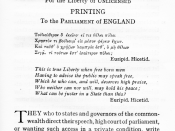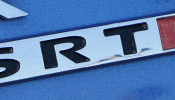- History
* 16 & 17 century - Authoritarian Theory placed print media under the control of the Kind which meant the church and state had control of the media.
* 1680 - Libertarian theory argued that media did not need to be controlled because people would follow their conscience, engage in public debate, and create a better life for themselves.
* John Milton in Aeropagetica said that in a fair debate, good and truth arguments will prevail.
- Social Responsibility Theory represents a compromise between favoring government control of the media vs. favoring total press freedom. Social Responsibility Theory has broad appeal.
- The Hutchins Commission on the Freedom of Press comprising academics, politicians and head of social groups were divided between those who favored a totally fee press and those who favored media control.
- At this time, the Chicago School opposed the marketplace of ideas because an unregulated media would serve the interest of the socially dominant groups while small, weak, pluralistic groups would either be neglected or denigrated.
- The Chicago School also felt that a "benevolent elite" could use media to gain personal power and to transmit hate & fear propaganda. Hitler's use of the media to sow hatred of the Jews was seen as an example.
- The Chicago School (which comprises a group of social researchers at the University of Chicago) envisioned modern cities as "Great Communities" made up of hundreds of closely related small groups who were culturally and racially diverse.
- With concern that the marketplace of ideas could not regulate itself and the "benevolent technocracy" / elite might use hate propaganda to get power, the Hutchins Commission decided to leave power in the hands of the media practitioners with the idea of serving the public.
- The gist of the...


